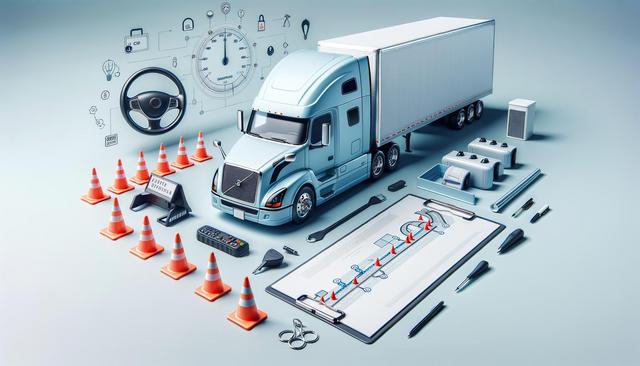Understanding CDL and Its Importance
Commercial Driver’s License (CDL) training is the foundational step toward a career in truck driving. A CDL is required to operate large, heavy, or hazardous material vehicles in the United States. These licenses come in different classes—Class A, B, and C—each permitting the holder to drive specific types of commercial vehicles. Choosing the right class depends on your career goals and the type of driving you intend to do. For those interested in long-haul trucking or operating tractor-trailers, a Class A license is typically essential.
CDL truck driving schools are designed to help students not only pass the mandatory written and road tests but also to equip them with real-world skills. These include defensive driving techniques, logbook management, and vehicle inspection procedures. By enrolling in a certified CDL program, students gain the hands-on experience and knowledge needed to enter a growing industry with steady demand for qualified drivers.
What to Expect in a CDL Truck Driving School
CDL truck driving schools provide structured training that combines classroom instruction with behind-the-wheel experience. Programs often last anywhere from three weeks to three months, depending on the school and the depth of training offered. Most include preparation for the written permit test, as well as comprehensive road training in a variety of driving conditions.
Students can expect to cover topics such as:
- Vehicle systems and controls
- Safe driving practices
- Federal and state regulations
- Handling cargo
- Accident prevention
During the hands-on portion, learners practice maneuvers like docking, turning, and highway driving. Instructors usually have extensive industry experience and offer valuable insights that can’t be found in textbooks alone. This practical exposure helps students build confidence and proficiency behind the wheel.
Benefits of Attending a CDL Training Program
One of the most significant advantages of attending a CDL school is access to structured education and training. This reduces the learning curve and improves the likelihood of passing the licensing tests on the first attempt. Additionally, many schools offer job placement assistance, connecting graduates with employers in need of skilled drivers.
Other benefits include:
- Faster entry into the workforce
- Increased earning potential compared to non-CDL drivers
- Opportunities to specialize in areas like hazmat or tanker driving
- Flexible job options, including local, regional, and national routes
CDL training also fosters a sense of professionalism and responsibility. Drivers who complete formal programs are often better prepared for the challenges of life on the road, including time management, route planning, and customer service.
Choosing the Right CDL Truck Driving School
Selecting a reputable CDL truck driving school is critical to your success. Look for programs that are accredited or certified by relevant transportation authorities. It’s also important to compare factors such as tuition costs, training duration, student reviews, and post-graduation employment rates.
Here are a few tips for choosing a school:
- Visit the campus and observe a class in session
- Ask about instructor credentials and student-to-trainer ratios
- Inquire about job placement services and employer partnerships
- Ensure the school provides access to modern vehicles and equipment
Taking the time to research your options will help you avoid substandard programs and ensure that you receive high-quality training. A well-regarded school can serve as a strong foundation for a long and successful trucking career.
Preparing for a Career After CDL Training
Once you’ve completed a CDL truck driving program and obtained your license, the next step is finding the right job that matches your lifestyle and career goals. Many new drivers begin with entry-level positions that offer valuable experience and on-the-job training. Over time, you can pursue specialized certifications and endorsements to broaden your opportunities.
Key steps after training include:
- Creating a professional resume highlighting your training and skills
- Applying to companies that align with your preferred routes and schedules
- Joining industry associations for networking and continued learning
- Maintaining a clean driving record and updating certifications as needed
The trucking industry continues to evolve, with increasing emphasis on safety, technology, and regulatory compliance. Staying informed and proactive will help you adapt and thrive in your new profession.
Conclusion
CDL truck driving schools provide a structured pathway to a fulfilling career on the road. Whether you’re seeking local driving jobs or long-haul opportunities, a solid training program lays the groundwork for success. By investing in quality education and practical experience, aspiring drivers can build a stable future in a vital and expanding industry. Taking the first step with CDL Training 101 is more than just learning to drive—it’s about starting a new chapter with confidence and clarity.




Leave a Reply